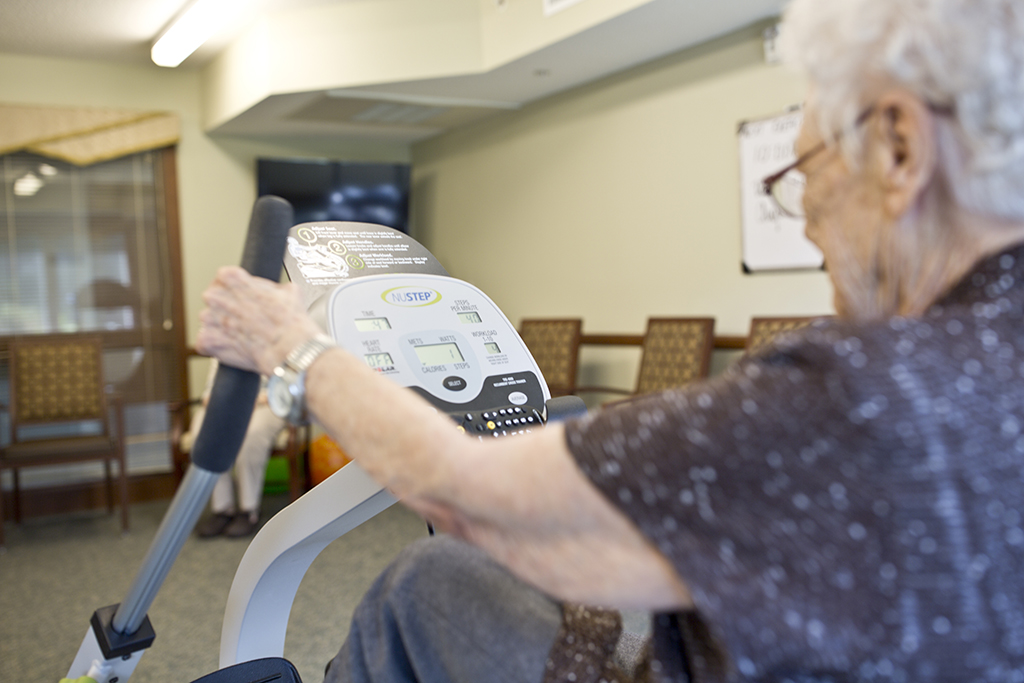Submitted by Kara Webb Monson, RN, Silveridge Assisted Living Manager
With those dreadful winter months fast-approaching, our risk for falls increases. According to the Fall Prevention Center of Excellence, statistics show that:
- More than 40% of people hospitalized from hip fractures do not return home and are not capable of living independently again;
- 25% of those who have fallen pass away each year;
- On average, two older adults die from fall-related injuries every day just in one state.
Falls can result in hip fractures, head injuries or even death. In many cases, those who have experienced a fall have a hard time recovering and their overall health deteriorates. A person is more likely to fall if s/he is age 80 or older or if s/he has previously fallen. Over time people may feel unsteady when walking due to changes in physical abilities such as vision, hearing, sensation, and balance. People who become fearful of falling may reduce their involvement in activities. Also, the environment may be designed or arranged in a way that makes a person feel unsafe.
The good news is that with adequate knowledge, falls can be prevented.
How Can We Prevent Falls?
Researchers have identified that the most effective fall prevention programs have many components. First a person needs to understand what may put them at risk for falling. Some risks can be reduced. Medical providers can help to identify risks and develop a plan. Specific physical activity can target reduce fall risk by increasing balance and mobility skills. Also changes to the home and community environment can reduce hazards and help support a person in completing daily activities. While this is not a comprehensive list of fall prevention strategies, it’s a good place to start:
Medical Management (Risk Assessment and Follow-up)
The first step is to talk with a health professional about getting a risk assessment for falling. During routine doctor visits, ask the doctor about your risk of falling. Some of the health factors that can contribute to falls are osteoporosis, being over age 80, changes in balance and walking patterns, changes in vision and sensation, and taking multiple medications. Certain medications cause older adults to experience dizziness. Once you have an idea of some of the risks and how you might be affected, you can work with your doctor, other health professionals, and your family to determine what factors can be modified to reduce your risk.
Balance & Mobility (Physical Activity)
Studies show that balance, flexibility, and strength training not only improve and mobility, but also reduce the risk of falling. Statistics show that most older adults do not exercise regularly, and 35% of people over the age of 65 do not participate in any leisure physical activity. This lack of exercise only makes it harder for individuals to recover after a fall. Many people are afraid of falling again and reduce their physical activity even more. There are many creative and low-impact forms of physical activity for fall prevention, such as tai chi.
Environmental Modification
The environment can present many hazards. At home older adults are commonly concerned about falling in the bathtub or on steps. In the community there can be trip hazards such as uneven or cracked sidewalks. By making changes to the home and community environment a person can feel safer and less at risk of falling. For example, the bathroom can be modified by installing grab bars as in the shower or tub, having a place to sit, and having non-slip surfaces. Steps can have handrails, adequate lighting, and contrast between steps. Community sidewalks in disrepair can be reported to city officials for repair.
Basics of Fall Prevention.

